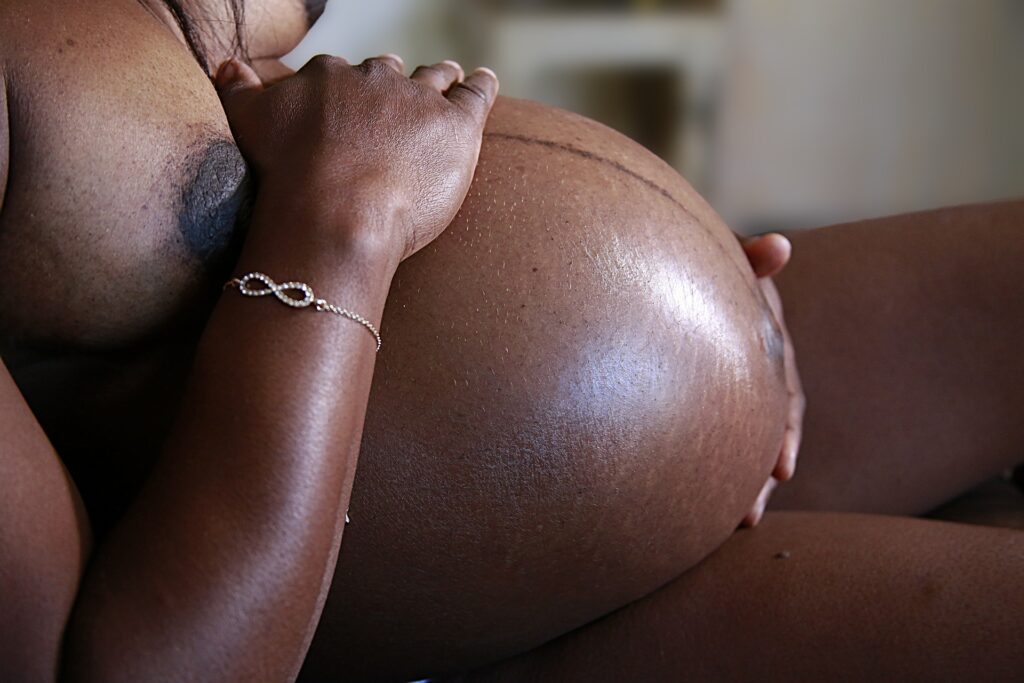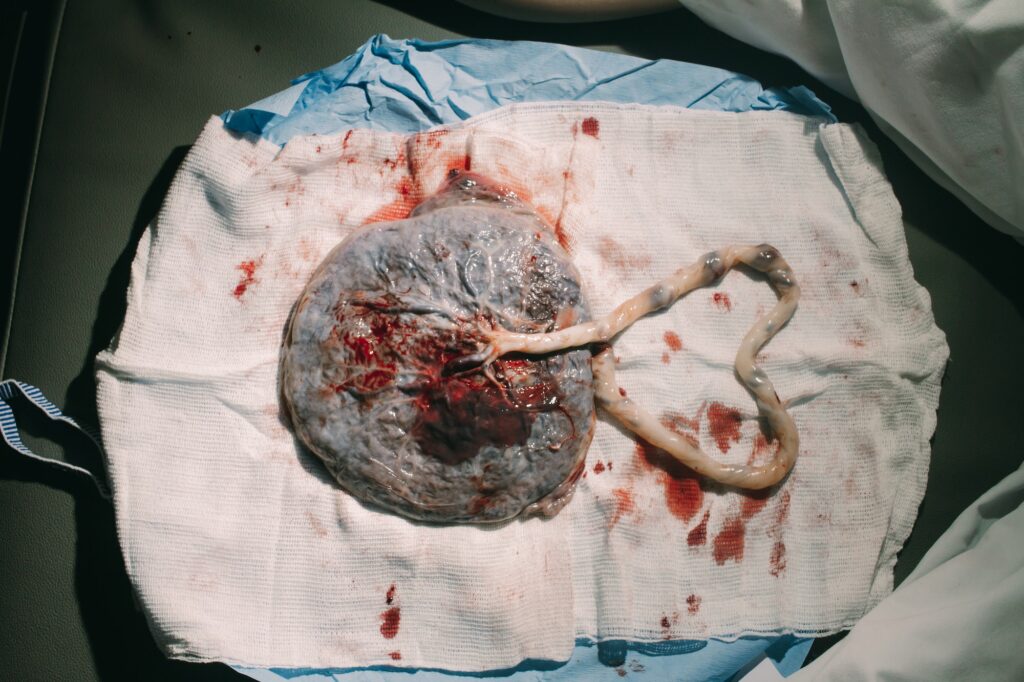
As birth becomes closer and you begin to start preparing yourself for labor. One of the questions that may come up for you or you may be wondering about is, What exactly happens during birth?
I mean in short, we know that at some point, our bodies go into labor, contractions begin to help push the baby down and after hours or days, we meet our baby.
But did you know that there are 3 stages of labor? I honestly had no clue that there were stages to labor until I had my baby girl at home, and became a doula. This put me in a space to learn and first hand see these stages in labor as I supported women during birth.
The 3 stages of labor pinpoint the different parts of labor that you will go through during your birth and it can be helpful to know going into labor.
The 3 stages of labor are :
Stage 1: Dilation
Stage 2: Birth of your baby
stage 3: Birth of your placenta
In this post, I will be talking about these 3 stages of labor, what happens, and what you can expect. Learning about the stages of labor before birth can help you to better understand what to expect and guide you into how you can handle each stage of labor.
The first stage of labor: Dilation of the cervix
Before your baby can come out, the cervix has to become soft, thin (effaced), and open (dilated) to 10cm. This is why it’s called the dilation stage.
During this stage, the uterus will begin to contract to squeeze the baby down and pull the cervix back so that the cervix can fully open (Dilate).
But wait, before I go any further… let’s go over contractions, dilation, and effacement real quick.
Related post:
16 comfort measures for your birth
6 ways to mentally prepare for your home birth
What are contractions?
Contractions are the tightening and relaxing of the uterine muscles that go across the uterus and up and down the uterus. During contractions, you may feel a tightening or hardening of the belly or a crampy feeling.
During labor, these contractions start mild and over time as you further dilate they become stronger, longer, and closer.
What is dilation?
Dilation is the opening of the cervix that allows the baby to exit the uterus and into the birth canal. Dilation is measured by centimeters. 1cm meaning your cervix is slightly open to 10 meaning your cervix is ready for the baby to come out.
What is Effacement?
Effacement is the thinning of the cervix. The cervix normally is about 3 to 4 inches long. During labor, it’s dissolved and becomes completely flat or gone like a sheet of paper to allow the baby to come in.
Effacement is another key factor in the labor process. Many times, dilation is the main focus to scope progression in labor from your provider, but without the cervix fully being effaced, the baby can not come through.
Okay now, let’s get back into the labor stages.
The first stage of labor, the dilation stage is divided into 3 different phases. You have
- Early labor
- Active labor
- Transition

During Early labor
- Your cervix will Dilate between 0-6 cm
- Some effacement happens (thinning of the cervix)
- Contractions will feel mild, and inconsistent, coming in 5 to 20 minutes apart.
- Contractions last 30 to 40 seconds
- Increased vaginal discharge, bloody show
- Loose stool
- You may begin to feel anxious for labor to
What you can do during early labor
It is common around this stage to become anxious and excited about labor and getting close to birthing your baby.
During this time things are still in the beginning stage of picking up. Early labor can go on for hours, or days so it’s best to save your energy during this time and honestly continue about your day until contractions become too strong to be distracted by anything else.
What can happen during this stage if you begin breaking out the breathing techniques, labor movements, etc too early is you can tire yourself out before the active and transition stage of labor comes which you will need all your energy for.
Take this early period to rest, eat, and allow labor to take off when it’s ready.
I know how exciting it can be to finally be going into labor and soon meeting your baby but also keep in mind that we can not rush the process. Birth is all about surrendering to the process, flowing with it, and letting it do its thang!
So hold off on the squats and stairs… there will be a time for all that!
During active labor
- Dilated between 6-8
- Fully effaced ( cervix went from ¾ inches long to as thin as paper)
- Contractions become more intense progressing stronger, closer, and longer
- Contractions last 60 seconds or longer, and come every 5 minutes or less
What you can do during active labor
This is the point in labor when contractions begin to pick up becoming stronger, lasting longer, and coming closer together. They may not be as easy to ignore and do other things in between.
At this time, it can make all the difference to surrender to the contractions, let go of control and begin using comfort techniques and movement to build a ritual to get through contractions.
This may also be a time when you want support from your partner, doula or friends, and family.
Now would be a good time to move your body, squats, walk the stairs to help the baby move down, open the pelvis and allow the baby to move down putting pressure on the cervix.
Stay hydrated, and rest in between!
During Transition
- Dilation between 8-10cm
- Contractions are intense and longer at this point
- Contractions are coming every 2 to 3 minutes with little breaks in between
- Contractions are lasting 60 to 90 seconds
- It May begin to get hot, cold
What you can do during transition
This transition phase is exactly what it sounds like. There is a shift in contractions, a transition that happens at this point. As your cervix finishes dilating, your Contractions will be the most intense than they have been all labor. They are beginning to come back to back and last longer than earlier contractions.
During this time having an affirming team by your side, using affirmations, chanting, and a continuous movement can help you keep your focus and continue to go within as these contractions come in.
Focus in, surrender to the process, utilize movement and comfort techniques, and find your breath.
This last part of the first stage can become pretty intense. This is the point when your faith will come in, and your trust in the process. This is the point when many want to give up and think they can not do it.
But just know that this is a good sign. When the contractions start to get to this point, you have made a lot of progress, and the baby is on the way! So keep going, you are almost there!
Remember the baby is working to come out and wants to come out just as bad as you want them to.

Second Stage of Labor: Birth of your baby
Once your cervix is fully effaced (thinned out), you are fully dilated (cervix is fully open for the baby to come down.)
You will begin to move into the second stage of labor, the pushing stage.
During this time you may feel an increase in pressure in your lower back or like you have to go poop. This is a good sign that the baby is low and getting ready to make their move out!
In the second stage of labor, your baby will be moving deep into your pelvis, rotating to fit through the pelvis and be born.
3 phases in the second stage play a role in the birth of your baby and they all work together:
- The resting phase
- The Descent Phase
- Birth and crowning
The resting phase: A pause in a labor
There is so much anticipation at this point! You have been laboring, waiting to get to this point, and then boom things just stop. This is called the resting phase of labor.
Sometimes in labor, once the dilation stage is complete, there can be a pause in contractions. This is because our baby’s head has moved further out of your uterus. This may take some time for the uterus to adjust and tighten around your baby’s body to begin to contract to push your baby down and out effectively. This does not always happen but it’s good to know that if it does it’s normal.
It personally has never happened to me and I have not seen this happen for a very long period with the mothers I have supported.
The Descent phase: Baby making their entrance
Your baby is doing a lot of movement during this stage. As their head enters the pelvis, they will begin to tilt, rotate and mold to fit. They go through this instinctive movement through the pelvis to find their way to the birth canal.
In the process, your baby will go through 7 movements also known as birth mechanisms or cardinal movements. They go like this..
- Engagement- Baby will begin to move into the pelvic inlet(opening of the pelvis)
- The descent-Their head will Mold as needed as it moves deeper into pelvic
- Flexion- Tuck their head to the chest to allow a smaller part of their head to enter the pelvis (top of head)
- Internal rotation-Baby will rotate head and shoulders to fit through the pelvic outlet ( exit of the pelvis)
- Extension-There head will pass through the pelvic outlet and under the pubic bone (this is where babies head is born)
- External rotation-Baby will rotate again to move shoulders under the pubic bone
- Expulsion- As the shoulders move from under the pubic bone, the rest of the body will be born.
Pushing
As your baby does its job, finding its way down through your pelvis. Your uterus will be contracting as well to help the baby move down in this process. Your job will be to breathe with your contractions as they come in and push with the urge of your baby coming down to help your baby out.
Remember that everything is working together here.
Your uterus is building up contractions that push the baby out.
Your baby is moving in their movements to get through the birth canal.
And then you are listening to your body, your baby, and the urges you feel to guide you into when to push and bear down.
This stage by far is probably the most intuitive part of birth. It’s beautiful and so empowering.
Crowning and birth
This is when your baby is actually born! You may have heard of the ring of fire. This is when the baby’s head is coming out and the tissue around the vaginal opening is stretched around their head. Once the head makes it through this part, the shoulders rotate under the pubic bone like mentioned above and your baby is here!

Third stage: Birth of placenta
After the birth of your baby, the placenta will begin to attach from the uterine wall. Your uterus will continue to contract to the birth placenta and constrict the blood vessel in the uterus.
Skin to skin right after your baby is born as well as breastfeeding can help boost your oxytocin flow, a main birth hormone that allows the uterus to contract.
You may also have the urge to push with the placenta and that can help it come down as well. After the placenta is out, you will continue to have contractions to help with bleeding and for the uterus to go back to regular size.
Your body was built to do this!
A common affirmation that I hear often is “ our bodies are built to birth”
And when you really understand how the birthing process works, and learn about all the different transformations bodies go through to give birth to life.
That affirmation becomes so much more powerful. So ima end off with this.
Your body IS built to birth. In this post, I have broken down the baseline of what happens from early labor all the way to when your baby is out. As you have read, birth happens. Our bodies know what to do, our babies know what to do and our job is to have faith in that, trust the process, and surrender.
You can not control your birth but what you can control is how you prepare your mind, body, and spirit and change the narrative around birth.
Save this post. Share it. Continue to further your knowledge around birth. You got this momma!
I’ll add the resources and references I used for this post as well!
Until next time,
Stay tuned, in tune, and forever evolving
Stephanie


Leave a Reply